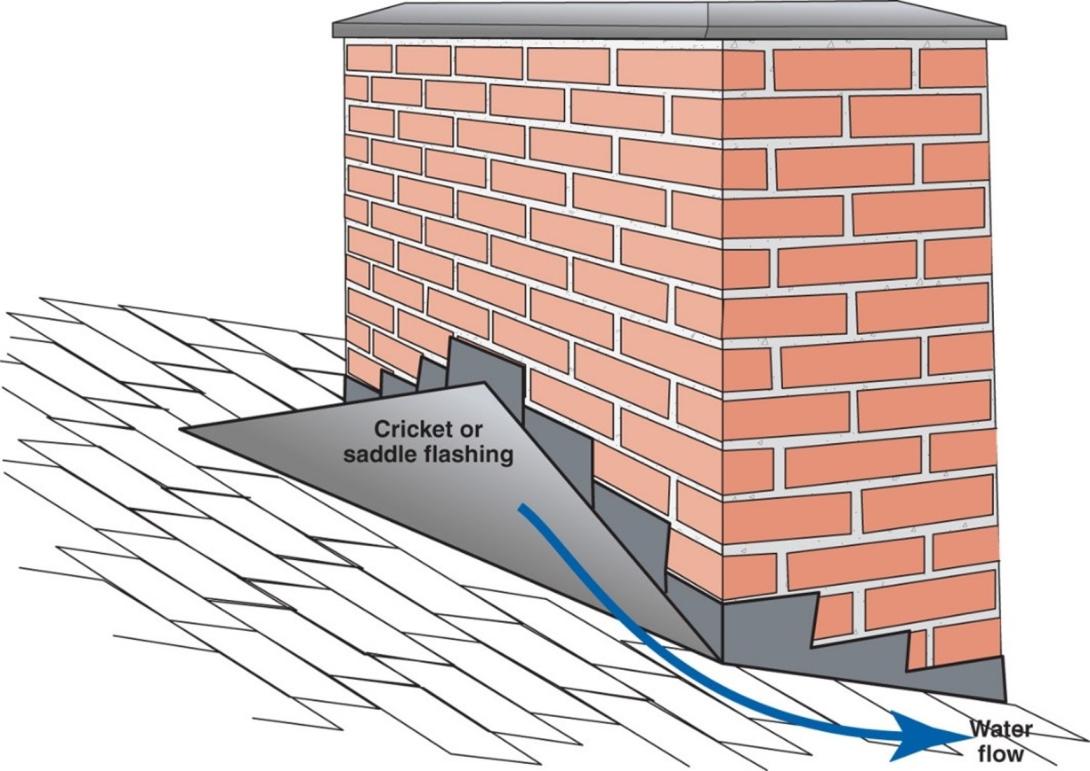
Roofing
Waterproofing Chimneys
Waterproofing of the connection between the roof assembly and the chimney is important for controlling rainwater entry during high wind events such as hurricanes. It is accomplished by connecting the water control layer of the roof assembly to the water control layer of the chimney. Typically, step flashing along a chimney is integrated with asphalt shingle roofing and topped with counterflashing that is embedded into the brick mortar joint.
The chimney is one of the largest penetrations in a residential roof assembly. Chimneys typically have numerous requirements beyond that of venting products of combustion. They must be adequately connected to the roof structure to resist wind loads based on site design wind speed and exposure category. They also must be waterproofed to resist rainwater entry during high wind events such as hurricanes.
Metal flashing typically serves as a water control layer transition between the brick layer and the fully adhered roof membrane underlayment. The metal flashing consists of three elements: base flashing, step flashing, and counterflashing.
The base flashing should be sealed with a full bed of mastic to the top surface of the fully adhered roof membrane underlayment. A step flashing is then integrated in a layered manner with the asphalt shingle roofing. Counterflashing is embedded into the mortar joints of the brick layer and overlaps the base flashing and the step flashing, completing the waterproofing transition.